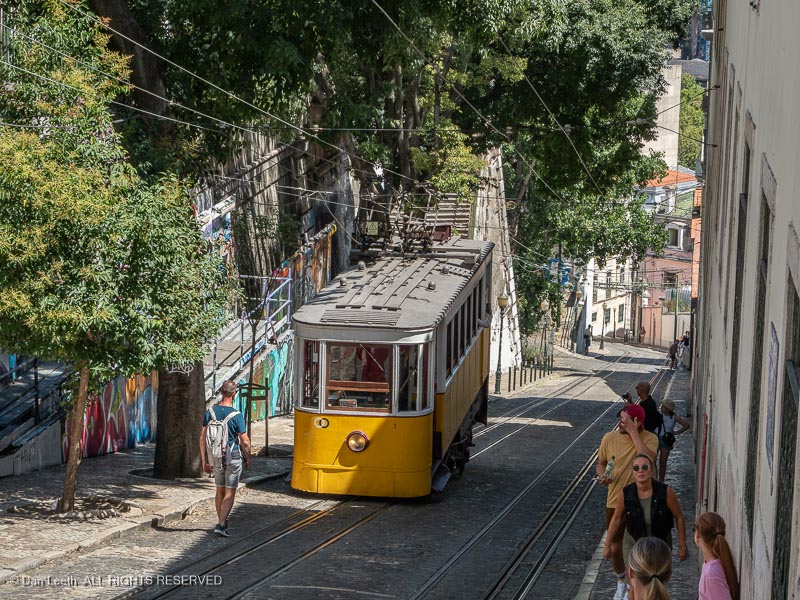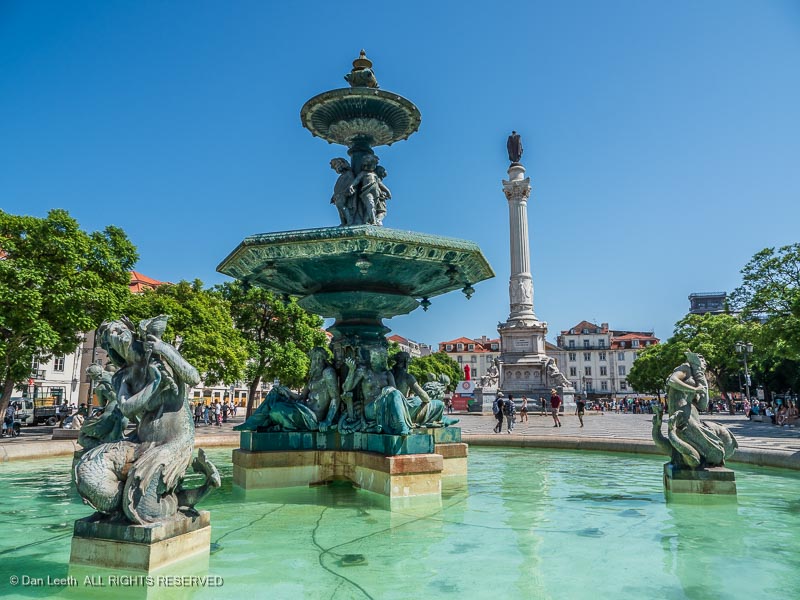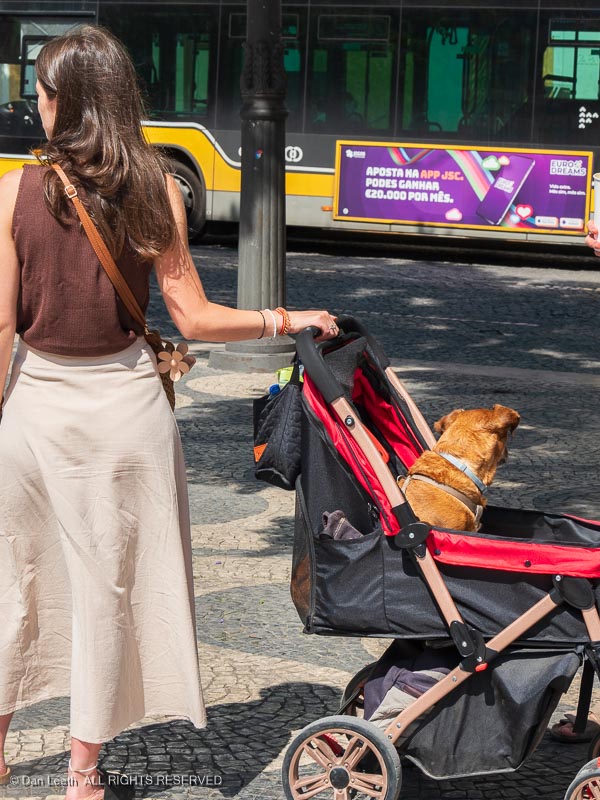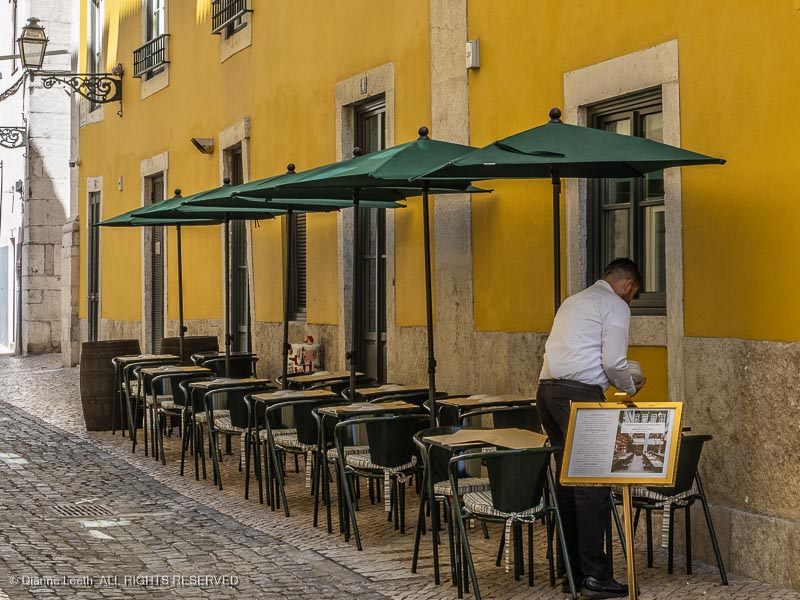
Sunday would be a walk-around day. Our bus tickets also covered a ride up the Santa Justa lift, an outdoor elevator that opened in 1901. Located near our hotel, we decided to ride it up and explore the Carmo Square neighborhood above.
Up there, we went past the Carmo Convent…

…and wandered around a terraced park with sculptured busts missing from posts and walls sprayed with graffiti.

Graffiti, or tagging, is rampant in Lisbon. Abandoned buildings and walls sport ample amounts of paint, effectively ruining photo ops for those of us who want to capture clean views of historic structures. Even passenger trains have become the canvases for the graffiti “artists.”

Since Dianne’s new knee doesn’t like downhill walking, we left our lofty location on the Gloria Funicular (also included in our bus package)…

…back down to hotel level off Rossio Square. This open area features the usual European standbys such as statues and fountains…

…construction cranes…

…and locals out walking their dogs.

The cobblestones in Praça do Rossio are laid in a wave pattern that made it seem like we were walking on a rolling surface.

The day was young, so we decided to take a walk up Avenida da Liberdade, a broad, shady, park-like median between two streets we had traveled on our bus route. The route was packed with vendors peddling everything from footwear…

…to beer.

The avenue led to Edward VII Park, a long stretch of grass and hedges that led up a hillside flanked by cobblestone walkways. We headed up.

Near the top, we stopped at the Carlos Lopes pavilion, a building decorated in Portuguese tiles that was originally built for the International Exhibition of Rio de Janeiro in 1922. It was dismantled and brought to Lisbon ten years later.

The park ends at a spectacular overlook flanked by a pair of towering obelisks. This was stop number 5 on one of our bus routes. We waited for the next bus, got onboard and headed back down to a public square near our hotel.

That evening, we walked down to the waterfront where we caught a boat tour, which was also included in our package.

The boat ride give us a different view of some of the things we had seen from land, such as the Tower of Belem, a 16th century fortification…

…and the Monument of the Discoveries, a sculpture honoring the Portuguese sailors who forged new routes to Asia, the Americas and around the world.

We passed under the April 25 suspension bridge, its name commemorating the Carnation Revolution which overthrew the authoritarian government on that day in 1974.

Atop a hill on the far side of the bridge stands the Cristo Rei, Christ the King. The statue, looks quite similar to the Christ the Redeemer statue in Rio de Janeiro, Brazil.

Back on land, our evening walk back to the hotel was interrupted by guitar music coming from an al fresco restaurant on a side street. We found an empty table, ordered dinner and wine, and enjoyed a pleasant night dining with pleasant background music.

Sidewalk dining was one of the treats of Lisbon. It seemed like every street in the more touristy areas of Lisbon was lined with restaurants offering al fresco dining. We had three such eateries located in front of our hotel. Almost everywhere, the wait staff spoke English and offered menus with English translations.

